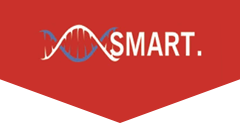Abstract
The popularity and acceptability of Computer Assisted Language Teaching (CALT) is rapidly increasing as multimedia developments and technology are advancing. In the past few years, CALT systems have become fully integrated with audio and video support, creating interesting and attractive presentations. With the Internet emerging, a new platform for CALT systems has evolved. Thus, there has been a move from CD-ROM-based CALT to online Web-based CALT, enabling more connectivity and interactivity with other students or teachers. Important examples of why CALT has moved to Web-based mediums include the ability to carry out audio and video-conferencing, use chat rooms and e-mail and communicate with native speakers of the language. This new technology in language education has also increased learner autonomy, creativity, productivity and team work. Interactive teaching approach and CALT have been used to tutor language learners through language drills or skills practice; as stimulus for discussion and interaction; or as a tool for writing and research. Computer-Assisted Language Testing can be defined as “an integrated procedure in which language performance is elicited and assessed with the help of a computer” (Niojons, 1994). A very common example of the use of CALT is for multiple choice questions. If the testing system is designed and implemented correctly, then the results of the computer testing will be immediate and without errors, whereas if multiple choice questions are corrected by people, there is always the possibility of human error, and also the process is a lot lengthier and time consuming. It is important, however, for CALT programs to provide the learners with clear and accurate feedback results. One of the most successful CALT systems is the one used for the TOEFL exams. The Test of English as a Foreign Language (TOEFL) is taken worldwide by nearly a million people each year. It is an important test since the results determine whether students are to be accepted into many U.S. universities. TOEFL used to be a ‘pen-and-pencil’ exam, but since 1998 it has become, and still is, a computer-based exam taking advantage of CALT. CALT will continue to play a vital role in the future of Computer-Assisted Language Learning (CALL).
Recommended Citation
Chatterjee, Suvraneel; Sahoo, Amitesh; Chowdhury, Souvik Roy; and Bhattacharjee, Ankur
(2024)
"COMPUTER ASSISTED LANGUAGE TEACHING,"
International Journal of English Learning & Teaching Skills (IJELTS): Vol. 1:
Iss.
4, Article 5.
Available at:
https://research.smartsociety.org/ijelts/vol1/iss4/5

